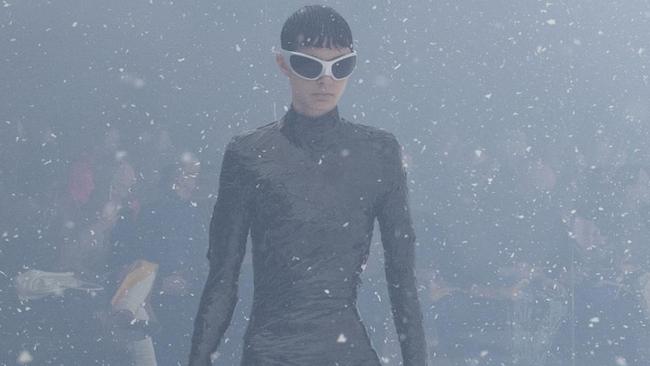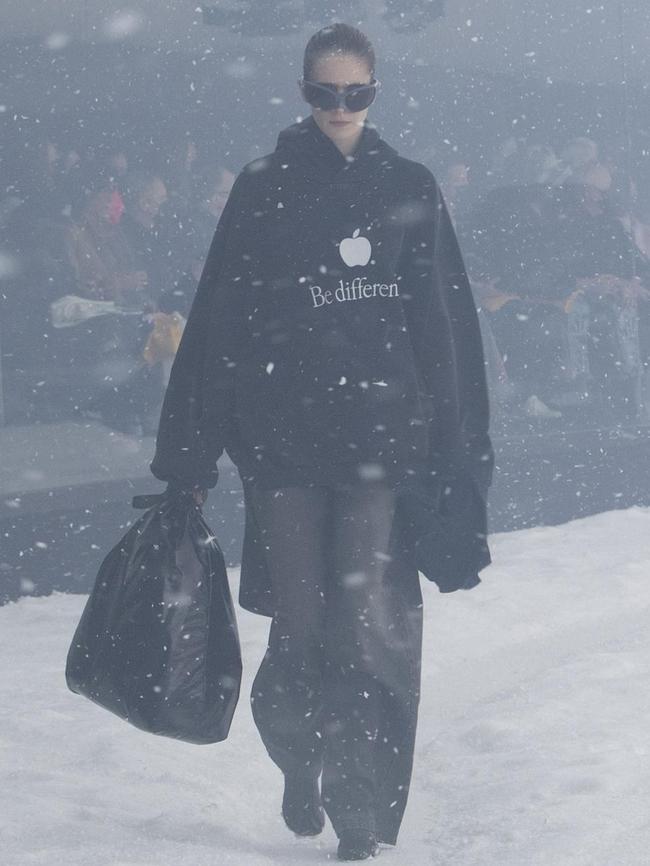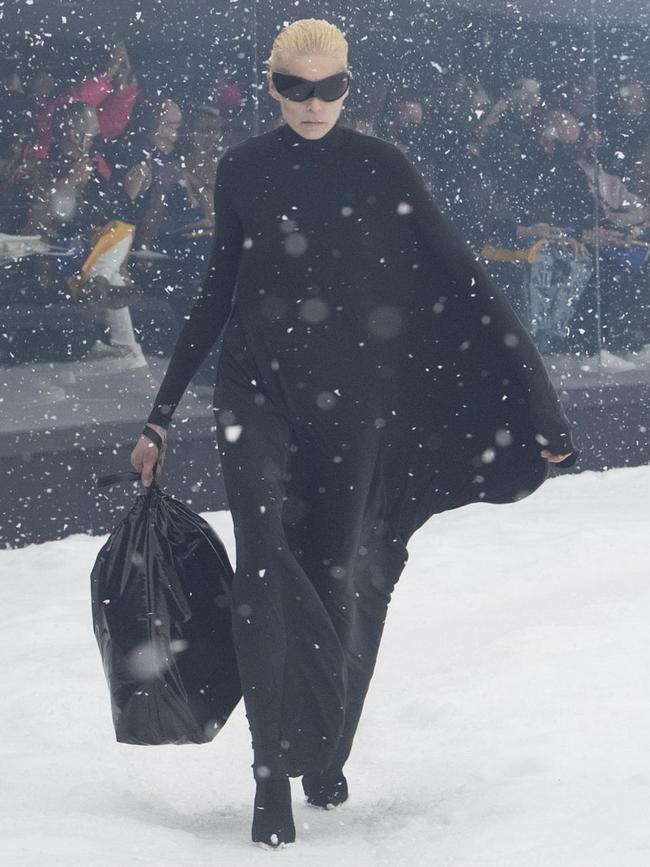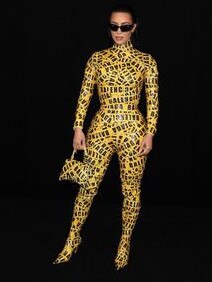Balenciaga takes on the war in Ukraine during Paris Fashion Week
Several members of the audience were crying during ‘the show of the season’ at Paris Fashion Week after being left with the horrifying feeling of refugees fleeing the escalating crisis in Ukraine.

Over one million refugees have already fled Ukraine in the wake of Russia’s invasion. “I have worked in refugee emergencies for almost 40 years,” said Filippo Grandi, the United Nations High Commissioner for Refugees, last week, “and rarely have I seen an exodus as rapid as this one.” So when Balenciaga’s creative director Demna, himself a refugee who fled his native Georgia during its civil war in 1993, was finalising his fall collection, the unfolding situation in Ukraine felt so close to home that he considered cancelling this week’s show in Paris.
Demna, who recently dropped his last name Gvasalia to go by a mononym, wrote in the show notes that “in a time like this, fashion loses its relevance and its actual right to exist. Fashion feels like some kind of an absurdity.” But he pressed on, fearing that ditching the show would mean “giving in.” Instead, he decided to reorient the presentation toward Ukraine, describing the show as a “dedication to fearlessness, to resistance, and to the victory of love and peace.”
The French brand, which was established in Paris when Spanish designer Cristóbal Balenciaga fled his country’s civil war in 1937, pivoted quickly. It was among the first to signal support of Ukraine on social media last week, and made a donation of an undisclosed amount to the World Food Programme, which is providing emergency food assistance to those affected by the war. Balenciaga has been involved with the organisation since 2018, when the brand released a $750 hoodie emblazoned with the WFP logo — causing a brief stir over the piece’s mishmash of luxury and altruism.


At the show on Sunday at the Paris-Le Bourget airport, folded on each seat was a T-shirt representing the Ukrainian flag — worn prominently in the front row by actor Salma Hayek, who is married to François-Henri Pinault, the chairman of Kering, which owns Balenciaga. Ms Hayek was photographed with another major celebrity attendee, Kim Kardashian, who arrived wrapped in crisis-signalling “Balenciaga” emergency tape (the original theme for the collection was linked to global warming). The logo-mummy look, also featured in the show, will be available for sale this fall in the form of a roll of tape.
Also for sale will be the more overtly refugee-evoking pieces from the collection, including black leather sacs resembling garbage bags and knits resembling plush towels that wrap around the shoulders like capes. While the brand would not confirm which elements of the collection were already in the works when the Ukraine crisis escalated, those are the pieces that left attendees with the horrifying feeling of watching refugees mid-flight. The models trudged through a glassed-in snow globe of a set with paper snow blowing in their faces. Several audience members left crying.
I wondered, while watching the show, whether the refugee theme veered into a romanticism, or a commodification of pain. One could imagine that those leather garbage bags might well be sold to oligarchs on Madison Avenue next season, after all. Although the industry and social media reception of the collection was mostly positive, a few online dissenters spoke about feeling “uncomfortable” and that the show was “inappropriate.” When I spoke with Vena Brykalin, the Vogue Ukraine fashion editor, after the show, he also expressed some ambivalence, but said that ultimately it will depend on how the garbage bags and towels are marketed to the public. He did say, though, “As a Ukrainian I didn’t feel offended.”
But the garbage bags and the towels, together with Balenciaga’s signature tough black separates and finale looks in Ukraine blue and yellow, produced a coherent collection that directly referenced the ongoing world events in a way that felt authentic, at least to me and others I spoke to. The only designer I can think of who matched Demna’s capacity to terrify through beauty was the late Alexander McQueen, with his collections like 1995’s “Highland Rape,” inspired by England’s treatment of Scotland in the 18th century.

This show is likely to enter fashion lore in the same way that Mr. McQueen’s collections have. It began with a voiceover of a poem by Oleksandr Oles calling for Ukraine to stay strong, and the soundtrack then progressed from melancholy strings to the more typical Balenciaga Berghain beats.
Mr. Brykalin, the Vogue Ukraine editor, was touched by the inclusion of the poem. He thinks that Demna’s collection was exactly the wake-up call that the fashion industry needed. He said, “It shows how great he is as a designer: He really has this sense of context and urgency.” At the moment, many Ukrainians are getting their daily news about the war from feeds on the app Telegram. Mr. Brykalin explained that on these feeds, which aggregate news from different sources, stories about the Balenciaga show appeared alongside information about the most recent explosions. He said this was evidence of its impact.
“For Ukrainians it matters,” he said. “It matters for us to feel seen and heard. On a cultural level it absolutely resonates.” One of Balenciaga’s sweatshirts bore a variation on the 1997-2002 Apple Inc. slogan “Think different.”
It initially felt out of place in the show, but then I remembered that Steve Jobs was the son of a Syrian migrant. The artist Banksy even painted Mr. Jobs as a refugee in a 2015 mural called “The Son of a Migrant from Syria” near the encampment of Calais, France. In a way, that slogan could be seen as a sliver of hope for the millions of displaced people currently moving around the globe. Or as a reminder to the fashion industry to think differently about how to use its immense platform and its significant resources during a war.
The Wall Street Journal
